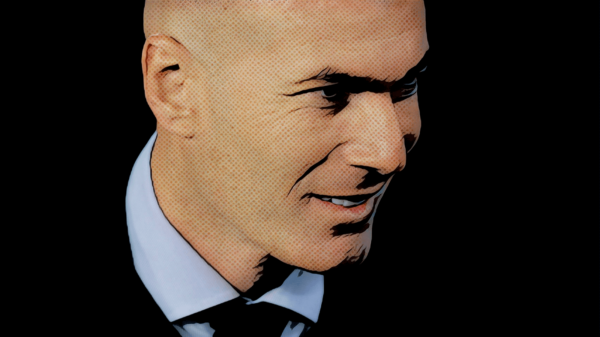Liam Bekker has a look back at the career of prolific hitman, Ruud van Nistelrooy tracing his career right from his formative years at Nooit Gedacht and Margiet to his swansong at Malaga.
After spending his formative years at Nooit Gedacht and Margiet, 17-year old Ruud van Nistelrooy signed his first professional contract with Dutch Eerste Divisie side Den Bosch in 1993. Van Nistelrooy’s early days at Den Bosch were slightly underwhelming with the young Dutchman netting only four goals from midfield in his first three seasons at the club. The 1996/97 campaign, however, proved to be the breakthrough season for van Nistelrooy with his return of 12 goals in 31 appearances signifying his readiness to make the step up to the big league.
Indeed, Eredivisie side Heerenveen shared these sentiments and signed the then 22-year old van Nistelrooy in 1997. Upon his arrival at Heerenveen, van Nistelrooy was convinced by coach Foppe De Haan to abandon his midfield role and play up front instead. It was a move that paid immediate divident as van Nistelrooy scored an impressive 13 times in his debut season in the Eredivisie. That would be his only season at the club, however, as van Nistelrooy’s noteworthy performances had caught the eye of heavyweights PSV Eindhoven.
The Eredivisie runners-up splashed €6.3m on the new-found hitman which at the time was a record transfer fee between two Dutch clubs – it would prove to be a bargain over the next three seasons. As fate would have it, van Nistelrooy’s first goal in the red-and-white of PSV came against his former employers and set the wheels in motion for a remarkable goalscoring season. Van Nistelrooy led PSV back to the Eredivisie crown with an incredible haul of 31 goals in just 34 games, a tally that earned him the Golden Boot and Dutch Player of the Year awards.
The 1999/00 season saw more of the same from the prolific van Nistelrooy. By March, he had raced to 29 goals in just 23 appearances and looked set to complete a deal to join English giants Manchester United. Then disaster struck. The Dutch international suffered a rupture to his anterior cruciate knee ligaments which ruled him out for the best part of a year. His season was over and the deal with United fell through. Despite missing the latter part of PSV’s campaign, van Nistelrooy still collected the Golden Boot award for his 29-goal haul, proving for the second consecutive season that he was the Netherlands’ premier striker.
The following season was predominantly spent on rehabilitation and yielded van Nistelrooy with just 12 appearances across all competitions. Despite his lack of game time though, van Nistelrooy’s goalscoring exploits over the previous two seasons had done enough to convince Manchester United of his quality and they returned – with a £19m warchest – to complete the deal that had failed the year before. The record-breaking sum was a fitting fee for one the world’s most feared strikers. His stay in Eindhoven was short in time but rich in quality as in three years with PSV van Nistelrooy netted an incredible 62 goals in just 69 Eredivisie appearances, leading the club to the domestic crown in the 1998/99 and 1999/00 seasons.
Given the nature and extent of his injury the year before, Man United’s decision to splash the cash on van Nistelrooy was something of a gamble. As with all matters of gambling though, the higher the stakes, the higher the reward – and the reward from this hand was to be plenty. Van Nistelrooy netted on his debut for United in a 2-1 Charity Shield loss to Liverpool before scoring twice more on his Premier League debut against Fulham. His season went from strength to strength from then on as the Dutchman went on to net 23 goals in the League and a tournament-best 10 in the Champions League. Included in his tally was a record-breaking run in which van Nistelrooy became the first player to score in 8 consecutive Premier League matches. His incredible individual performances weren’t enough to earn United either of the domestic or European titles but did see him rewarded with the PFA Players’ Player of the Season Award.
It’s hard to imagine that van Nistelrooy could top his exploits from the season before but he did just that in the 2002/03 campaign – and in some style too. The prolific frontman’s 25 goals (in 34 games) led United to the Premier League title and earned him the much coveted Golden Boot award. He soon earned another as for the second consecutive season he was the top goalscorer in the Champions League. The accolades kept pouring in as van Nistelrooy’s performances throughout the season also earned him the PFA Player of the Season award and saw UEFA name him as the best striker in Europe. All-in-all van Nistelrooy ended the season with an incredible return of 44 goals in 52 appearances for the Red Devils.
The 2003/04 season kicked off in familiar vein with van Nistelrooy smashing another record – this time his own. By scoring in the first two matches of the new season van Nistelrooy became the first player in Premier League history to score in 10 consecutive matches. It was a season filled with milestones for van Nistelrooy as on the 7th of February he scored his 100th goal for Man United in a thrilling 4-3 win over Everton. The Dutchman was also an instrumental figure in United’s victorious FA Cup run as he netted 6 goals, including 2 in the Final against Millwall.
In between all the accolades, trophies and milestones, however, van Nistelrooy was at the centre of proceedings on a day that would define the Arsenal v Manchester United derby for years to come. Van Nistelrooy had been instrumental in Patrick Vieira being dismissed for the Gunners earlier in the game before the Dutchman stepped up and missed a last-minute penalty. The heated encounter ended 0-0 and Arsenal ultimately went on to win the league unbeaten.
Van Nistelrooy missed out on large parts of the following season through injury but still managed a return of 16 goals in 27 appearances. Included in that, and in spite of his injuries, van Nistelrooy once again collected the Champions League Golden Boot award for his return of 8 goals in the competition. It was also a season that saw the Dutchman become Manchester United’s highest ever goalscorer in European competitions, surpassing the record previously held by Dennis Law. Van Nistelrooy also exacted a measure of revenge on Arsenal as his goal against the Gunners earlier in the campaign had ended their Invincibles streak at 49 matches (though he would later receive a 3-match ban for a foul on Ashley Cole during the match).
A string of rifts with Louis Saha, new-boy Cristiano Ronaldo and manager Sir Alex Ferguson ultimately resulted in the 2005/06 campaign being van Nistelrooy’s last at Old Trafford. The Dutchman’s 24 goals that season saw him treach 150 goals for United – a tally that took him just 219 appearances to achieve. Van Nistelrooy’s time at Manchester United may have come to a sour end but his performances and goals over the last five seasons had solidified his name in the club’s folklore. He was truly a legend in Red. Many had made the journey from Holland to England before, and many have made it since, but few (if any) have made the transition with such prolific efficiency as Ruud van Nistelrooy.
Alas, his time in Manchester, and indeed in the Premier League was at its end. Real Madrid had come calling.
The Spanish superpower coughed up €14m for van Nistelrooy in July 2006 and saw an immediate return from the clinical Dutchman. Van Nistelrooy netted a hat-trick against Levante in just his second league match for Madrid before scoring all four goals in a 4-1 win over Osasuna in November. Just as he had done in the Premier League before, van Nistelrooy equalled the then-longest scoring streak in La Liga by netting in seven consecutive matches on his way to winning the Pichichi. Real Madrid’s investment in van Nistelrooy had well and truly paid off as his 25 goals led the club to yet another La Liga crown.
Van Nistelrooy’s arrival at the Santiago Bernabau the season before had been the spark of a Dutch revolution at Madrid with the club bringing in Wesley Sneijder, Arjen Robben and Royston Drenthe for the 2007/08 campaign. With a supporting cast of countrymen van Nistelrooy went on with business as usual, netting an impressive 16 goals in 24 appearances as Real Madrid retained the title. Despite his fine goalscoring return, injury had seen a marked downturn in game time for van Nistelrooy and would ultimately result in his spell with Madrid coming to an end.
Over the next season and a half the Ducth international managed just 16 appearances across all competitions for Madrid as a serious knee injury and a host of subsequent knocks saw him fall out of favour at the Bernabau. Game time had become such a rarity for the once infallible van Nistelrooy that in January 2010 he opted to leave the club and join Hamburg in the Bundesliga. Despite the unspectacular end to his time with Los Blancos, van Nistelrooy’s return of 64 goals in 96 appearances was a true reflection that not only could he hold his own with the best, but that in his prime he was one of the best.
An 18-month spell with Hamburg ensued before van Nistelrooy returned to Spain for one last season, seeing out his career at money-rich Malaga. The prolific forward retired in 2012 having amassed an incredible 347 career club goals in 589 appearances.
Van Nistelrooy’s achievements throughout his career at club level earned him prolonged recognition within the Dutch national team. He made his debut for the senior side in 1998 and represented the Oranje over the course of the next thirteen years. Van Nistelrooy would have to wait six years before making his tournament debut though, as he missed Euro 2000 through injury and the Netherlands then failed to qualify for the 2002 World Cup. His chance eventually came during the Netherlands’ failed Euro 2004 campaign where van Nistelrooy scored in all three of his nation’s group stage matches.
The subsequent appointment of the legendary Marco van Basten as national team coach proved to be a dark period in van Nistelrooy’s international career. The 2006 World Cup saw him fall out of favour with the new gaffer and he was dropped for a string of matches following on from the tournament. The relationship between player and manager broke down to such an extent that van Nistelrooy announced his international retirement in January 2007.
Van Nistelrooy would later return, retire, and return again before finally playing his last game in 2011. His record for the national team was as impressive as one would expect, with van Nistelrooy netting a goal every other game for the Netherlands. By the time he had hung up his boots, the prolific striker had netted 35 goals in 70 appearances – a record which today sees him sit fifth on the Netherlands’ all-time goal scoring charts.
Van Nistelrooy never stayed at one place too long but he was admired and even adored wherever he went. Whether in the red of Manchester, the white of Madrid or the red and white of Eindhoven, van Nistelrooy was a goal scoring machine and is rightly remembered as one of football’s finest ever finishers.
Remember the Name // Larsson // Crespo // Juninho
Written by Liam Bekker
- 2016-17 Rule Changes: An interview with Dr. Errol Sweeney - July 6, 2016
- Scout Report | Stephane Sparagna: Marseille’s combative young centre-back - December 22, 2015
- Remember the name: Goal scoring machine, Ruud van Nistelrooy - July 6, 2015





























































